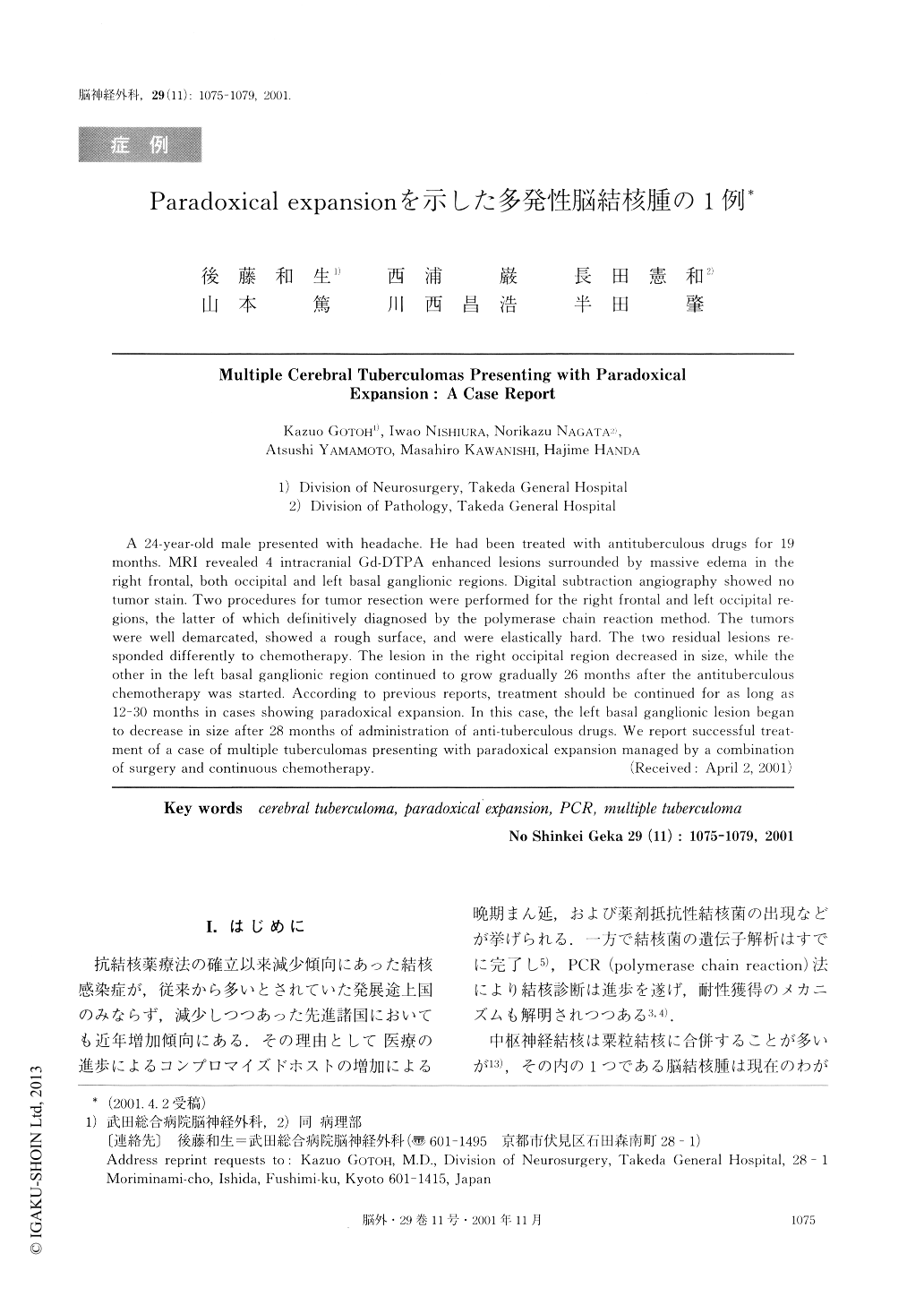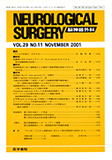Japanese
English
- 有料閲覧
- Abstract 文献概要
- 1ページ目 Look Inside
I.はじめに
抗結核薬療法の確立以来減少傾向にあった結核感染症が,従来から多いとされていた発展途上国のみならず,減少しつつあった先進諸国においても近年増加傾向にある.その理由として医療の進歩によるコンプロマイズドホストの増加による晩期まん延,および薬剤抵抗性結核菌の出現などが挙げられる.一方で結核菌の遺伝子解析はすでに完了し5),PCR(polymerase chain reaction)法により結核診断は進歩を遂げ,耐性獲得のメカニズムも解明されつつある3,4).
中枢神経結核は粟粒結核に合併することが多いが13),その内の1つである脳結核腫は現在のわが国では未だ稀な疾患であり,多発性はその1/3にすぎない9).またその特異な現象として脳結核腫の化学療法の経過中に画像的,臨床的に増悪する“paradoxical expansion”が知られている8).われわれの経験した多発性脳結核腫の1例につき画像所見およびparadoxical expansionを示した臨床経過を中心に検討を加えた.
A 24-year-old male presented with headache. He had been treated with antituberculous drugs for 19months. MRI revealed 4 intracranial Gd-DTPA enhanced lesions surrounded by massive edema in theright frontal, both occipital and left basal ganglionic regions. Digital subtraction angiography showed notumor stain. Two procedures for tumor resection were performed for the right frontal and left occipital re-gions, the latter of which definitively diagnosed by the polymerase chain reaction method. The tumorswere well demarcated, showed a rough surface, and were elastically hard. The two residual lesions re-sponded differently to chemotherapy. The lesion in the right occipital region decreased in size, while theother in the left basal ganglionic region continued to grow gradually 26 months after the antituberculouschemotherapy was started. According to previous reports, treatment should be continued for as long as12-30 months in cases showing paradoxical expansion. In this case, the left basal ganglionic lesion beganto decrease in size after 28 months of administration of anti-tuberculous drugs. We report successful treat-ment of a case of multiple tuberculomas presenting with paradoxical expansion managed by a combinationof surgery and continuous chemotherapy.

Copyright © 2001, Igaku-Shoin Ltd. All rights reserved.


